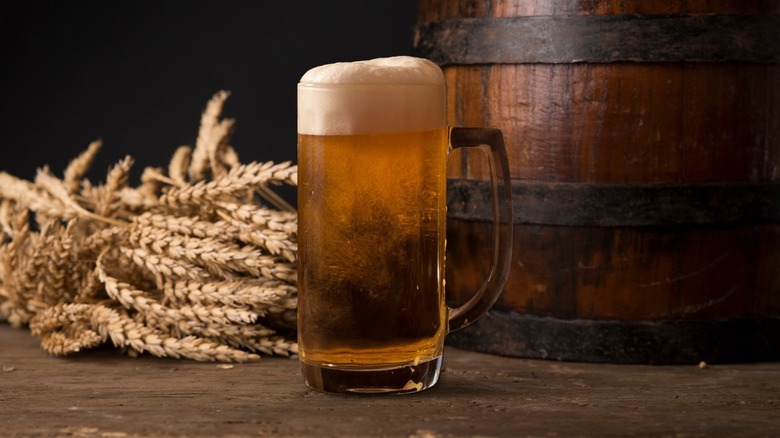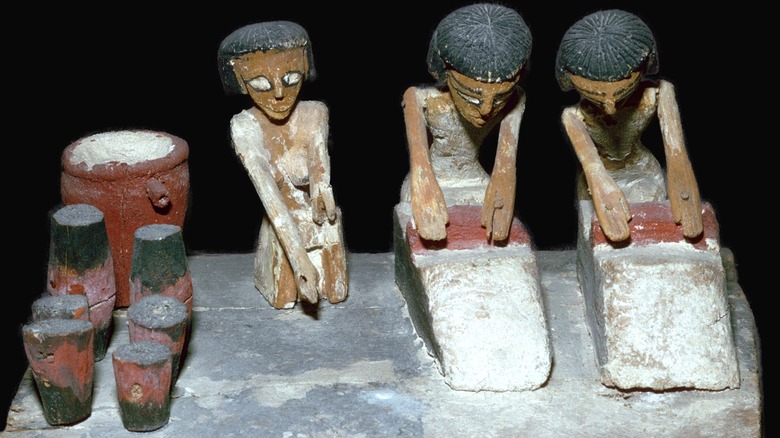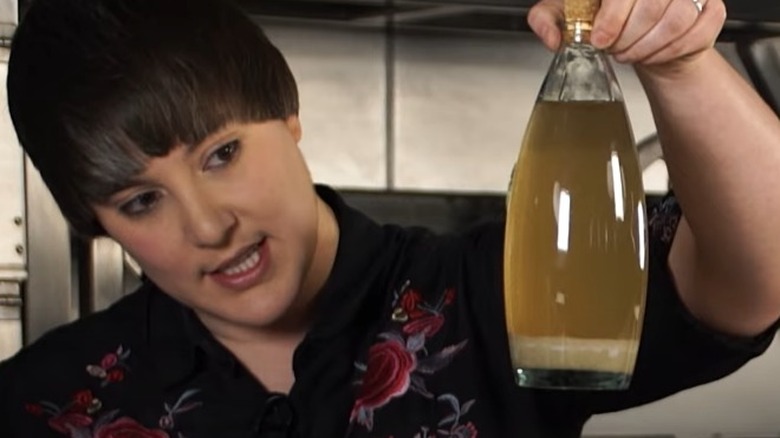What Does 5000-Year-Old Beer Taste Like?
Out of all the drinks available to us in modern society, only a few have a history that stretches back throughout much of humanity's existence. Of course there's water, but new evidence from Stanford University suggests that alcohol such as beer was produced before the onset of the Agricultural Revolution. Previous research suggested that fermentation was a happy accident of surplus created by farming grains, per British Museum.
Evidence, until this time, dated beer brewing to around 5,000 years ago in China (via Stanford University) and 4,000 B.C. in the Ancient Sumer and Mesopotamian cultures (per American Society of Overseas Research). National Geographic reported an archeological find of pottery fragments in Georgia containing the remnants of wine dating back to 8,000 years, and while it was suspected that beer also had a lengthy history, an archaeological discovery in Israel by a Stanford University research team uncovered the remnants of 13,000-year-old beer.
"This discovery indicates that making alcohol was not necessarily a result of agricultural surplus production," Li Liu, an archaeological professor at Stanford said. The team, headed by Liu, reported that the Natufian people who lived in the area at that time brewed beer for spiritual and ritualistic purposes. As a result, the archaeologists theorized that, in some locations, "beer may have been a motivating factor" in the farming of cereal grains, per Stanford University.
However, while you may be thinking that humans have been enjoying the relaxing effects of alcohol for a long time now, Jiajing Wang, a Stanford doctoral student, said that ancient beer is vastly different than what we drink today.
What kind of beer was produced at the oldest industrial-scale brewery?
Working in cooperation with the Egyptian Ministry of Tourism and Antiquities, New York University and Princeton University researchers uncovered a 5000-year-old Egyptian brewery that was producing beer on an industrial scale. One of the co-leads on the North Abydos Archaeology project, Senior Research Scholar Matthew D. Adams, said the facility was "able to produce many thousands of liters, and probably built to supply the funerary cults of Egypt's first kings, in which rituals were conducted both to worship them as divine figures and to sustain them in the land of the dead." According to New York University, the facility once housed 40 large ceramic vats, which were used to slow-cook and mash a grain and water mixture that was "strained and fermented to produce beer."
The beer was produced for both ritual purposes and for sustenance. For ancient cultures, it was considered a food source that contained a number of vitamins, minerals, and proteins. It was considered so important to Ancient Egyptians that, according to the British Museum, laborers at the Pyramid of Giza were provided laborers a daily ration of just over 1 gallon, and it was also consumed in "great quantities at religious festivals and celebrations." Many of these cultures also had gods or goddesses devoted to the drink. With this level of devotion to the brew, food historian Tasha Marks had to wonder what ancient Egyptian beer actually tasted like.
Grainy, smooth, and slightly sour
In an episode of a web series titled "Pleasant Vices," which explores ancient food production techniques, food historian Tasha Marks set out to find out exactly what ancient Egyptian beer tasted like. Using evidence from The British Museum and advice from archaeologists, Marks, brewer Michaela Charles, and beverage consultant Susan Boyle recreated a 5,000-year-old beer following an ancient Egyptian recipe. They used vessels and followed historical techniques as closely as possible. Grains used in Egyptian beer would not have been hops like our modern brew, so the team used a grain called "emmer" (farro), which is "the earliest precursor to modern wheat," per The British Museum.
What the team ended up producing surprised them. Based on historical knowledge, Marks said that she was expecting something "thick with a "porridgy consistency." "This is how you learn, through making," said Marks. Brewer Michaela Charles said, "It's grainy, it's smooth, it has no bitterness but it has that slight sourness." Boyle added: "It's golden, it's beautiful!"
Marks noted that while the beer was golden and clear, it left a residue at the bottom of the vessel. She pointed out, "If you're doing a chemical analysis of a pot, what you are picking up is the slurry that is left in there," which is what archaeologists would assess from a dig site. Marks suggested that it would be easy to conclude that ancient cultures drank a gruel-like beer when in reality, as Boyle suggested, "No one is going to go to the effort of building breweries ... if they're going to end up with something undrinkable in the end."


